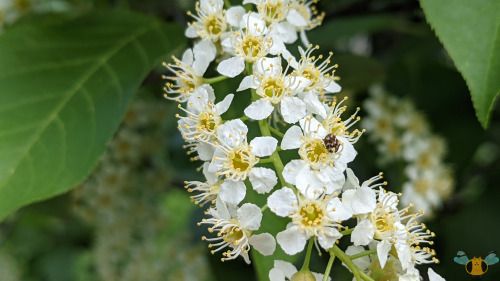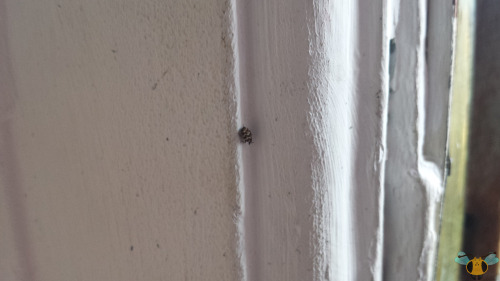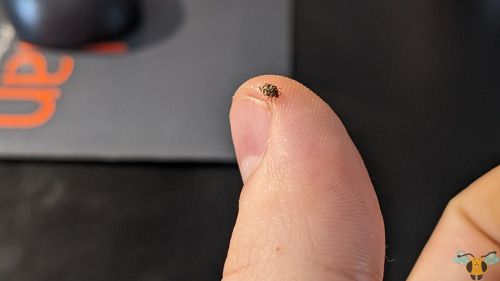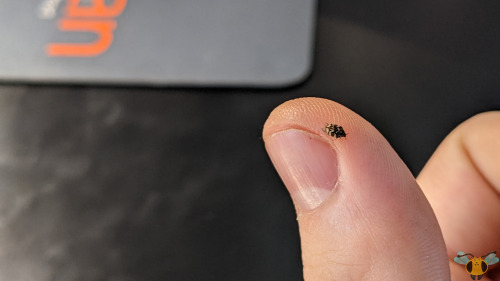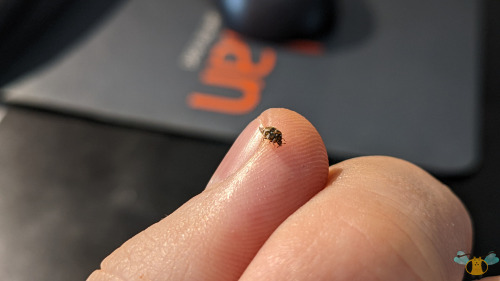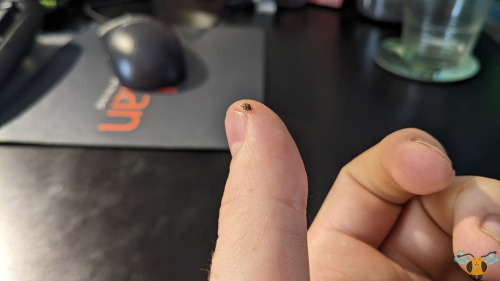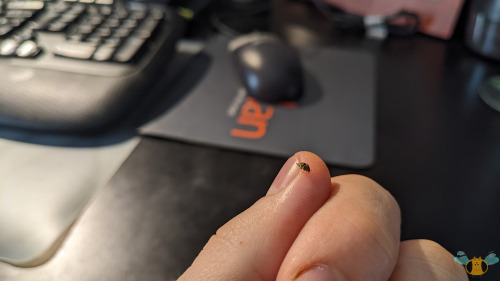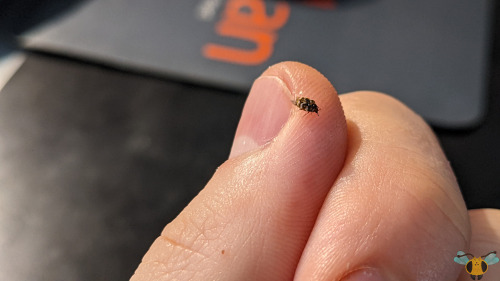Varied Carpet Beetle - Anthrenus verbasciI was looking through the insect orders and families t
Varied Carpet Beetle - Anthrenus verbasciI was looking through the insect orders and families that have been covered here and was surprised to find that I haven’t covered these little guys. As it turns out, I don’t have too many pictures of them either which makes me sad. I’ll have to come back and add more Beetles to this post as I take more pictures! Though fairly small, the checkered pattern on their back makes the adults easy to spot, but you’d need a powerful magnifier to see the fine details such as the position of their eyes and their tiny antennae. I’m not sure how common they are in other parts of Canada or North America, but at home there’s always a few individuals that are found yearly, crawling around just before and after the winter. The ones that emerge in time for spring get to enjoy the outdoors while those that emerge before winter will need to remain indoors if they wish to roam around. They’ve obtained a bit of a status as a pest, as the household environment can provide these Beetles and their future larvae with nourishment (more so the latter, adults (like the individual in Picture 1) prefer to feed on pollen). As that wonderful name “Carpet Beetle” suggests, these Beetles may have a taste for human furnishings, which can make them pests. Don’t let these images undersell just how small the adults truly are! They are much smaller than any other Beetles shown here, including the Yucca Beetle! Like the Yucca Beetle, a few may be adorable, but an aggregation of them may present issues. To clarify, these Dermestidae family Beetles may occasionally eat some furnishings because the hungry larvae need a diet of protein to grow. In nature, their protein sources come from dried fur, fallen hairs, shed skin, dandruff, wool, silk; anything organic in nature really. As such, when the larvae are abundant in a household, they may turn their attention to materials that fit this description such as clothing, loose fabric, and yes, carpets! They’ll need a source of water too. Best thing you can do if you find them is to vacuum them up, but unless there are many little larvae wriggling around, you may not find them. If you suspect you have any, look for millimetric grubs coated in small hairs. They’re quite small, so small in fact that the adults may use bird’s nests as locations to lay eggs. Just like in the Lord of the Rings: The Two Towers film, “The closer we are to danger, the further we are from harm”…”you are very small”. Considering the visual acuity of birds, its a risky proposition, laying eggs next to a predator, but these Beetles seems to make it work. Update: 7 more pictures added on Friday May 13, 2022. Hopefully this better conveys the size of these little beans. While they do seem tick-like, they do not bite. You can even see the little wings poking out.Pictures were taken on April 22, 2019 with a Samsung Galaxy S4 and May 18, 2021 with a Google Pixel 4. Update pictures were taken on May 12, 2022. -- source link
#ontario insect#beetle#carpet beetle#coleoptera#toronto#april2019#may2021#may2022
